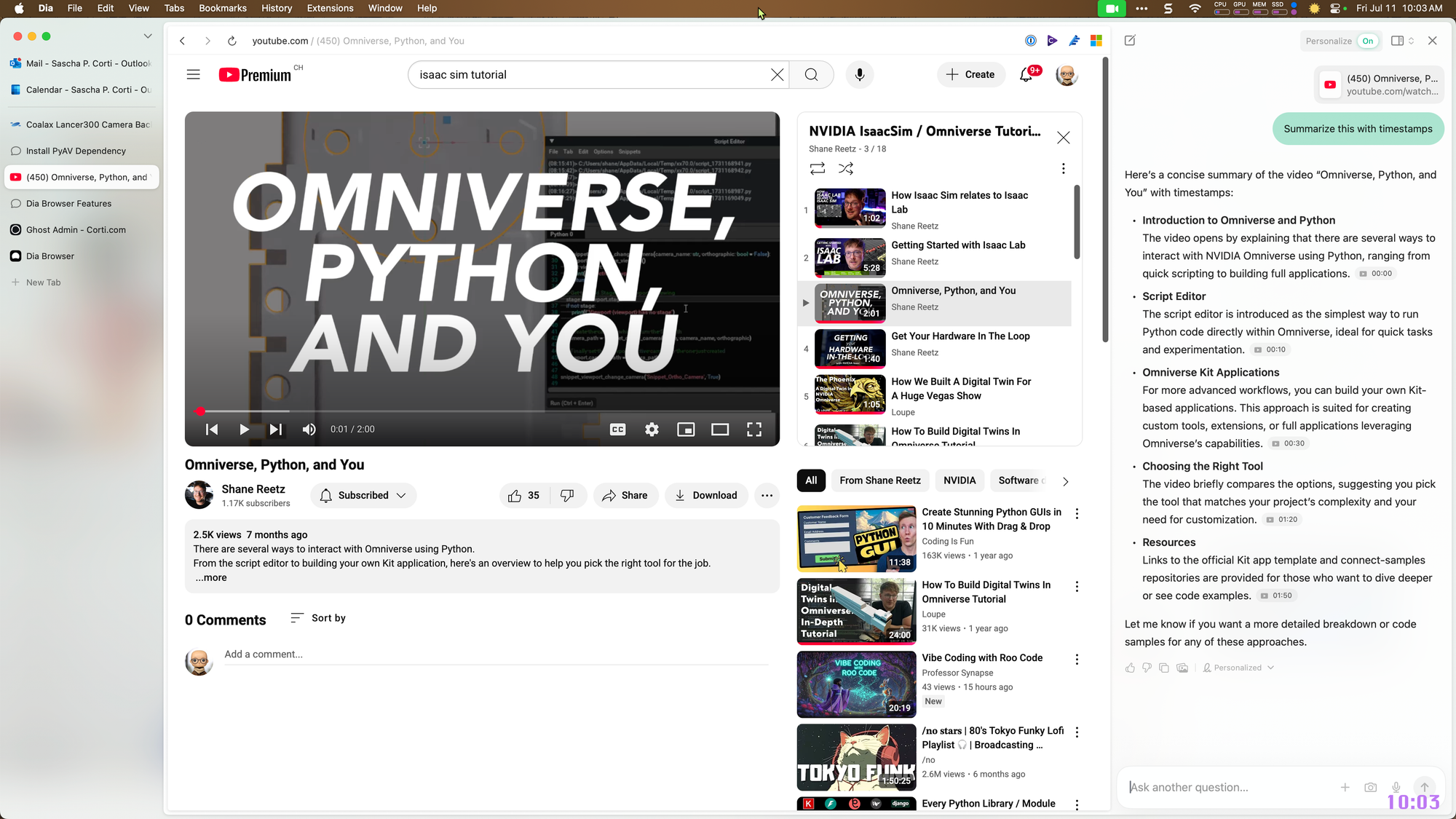Advantages of the Dia Browser

While patiently waiting for the release of Perplexity's Comet browser, I came across Dia, an agentic AI browser by The Browser Company of New York who created (and sadly abandoned) the great Arc browser.
Dia is a next-generation browser architected for extensibility, advanced automation, and seamless AI integration. This post explores its technical advantages, focusing on AI features, customization mechanisms, and the extensible skill framework.
AI Features: Native Integration and Contextual Intelligence
Dia’s architecture embeds an AI engine directly within the browser process, leveraging both on-device and cloud-based models. Key technical capabilities include:
- Context-Aware Assistance: The AI has access to the DOM, browser history, and active tabs (with user permission), enabling it to generate context-sensitive suggestions, automate form filling, and extract structured data from web pages.
- Natural Language Interface: Users can interact with the AI using natural language commands. The NLP pipeline parses queries, maps them to browser actions or custom skills, and returns results inline.
- Automated Workflows: Through AI-powered scripting, users can automate multi-step browsing tasks (e.g., scraping data, compiling reports, or triggering API calls) with minimal manual intervention.
- Secure Data Handling: AI models operate within sandboxed environments, ensuring user data is processed securely and never leaves the device unless explicitly permitted.
Customizability: Modular Architecture and User Control
Dia is built on a modular framework that exposes granular configuration options:
- UI Customization: The browser’s interface is defined via a schema-driven system. Users can rearrange toolbars, panels, and menus, or inject custom UI components using web technologies (HTML/CSS/JS).
- Configurable AI Models: Users can select from various AI backends (local, cloud, or hybrid), tune model parameters, and set privacy thresholds for data sharing.
- Programmable Workflows: Via a built-in scripting API (JavaScript/TypeScript), users can define triggers, actions, and conditional logic to automate interactions, notifications, and data processing.
- Permission Management: Fine-grained controls allow users to specify what data the AI can access, ensuring privacy and compliance with organizational policies.
Extensible Skills: Developer-Friendly Plugin System
Dia’s skill system is a robust extension mechanism for integrating custom AI-powered tools:
- Skill API: Developers can create skills using a documented API. Skills can access browser state, interact with web content, and invoke external services securely.
- Sandboxed Execution: Each skill runs in an isolated context, with strict resource and permission boundaries enforced by the browser’s runtime.
- Declarative Skill Manifests: Skills are packaged with manifest files describing capabilities, required permissions, and UI hooks, enabling dynamic discovery and safe installation.
- Skill Marketplace: Users can browse, review, and install verified skills from a curated marketplace or sideload their own for private use.
Conclusion
Dia’s technical foundation—AI-native architecture, modular customization, and a secure, extensible skill ecosystem—enables power users and developers to redefine what’s possible in a browser. Its approach to privacy, automation, and openness sets a new benchmark for browser technology.
